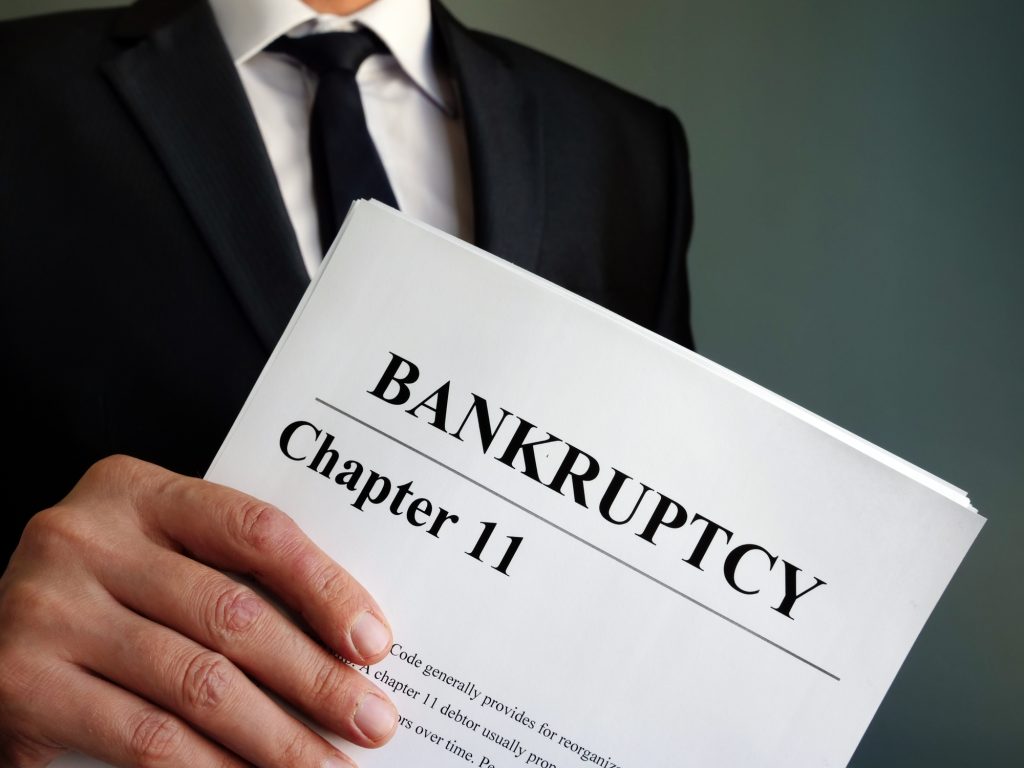
The Road to Financial Recovery: Understanding Your Bankruptcy Choices
When financial storms hit, knowing your options can be the lifeline you need. Whether you’re an individual drowning in personal debt or a business owner facing insurmountable financial challenges, bankruptcy might be the fresh start you’re looking for. But with various chapters and complex legal jargon, the world of bankruptcy can seem overwhelming. This comprehensive guide will walk you through the maze of bankruptcy options available in the United States, helping you make an informed decision about your financial future.
The Landscape of Bankruptcy: A Brief Overview
Bankruptcy is a legal process designed to help individuals and businesses eliminate or repay their debts under the protection of the bankruptcy court. The U.S. Bankruptcy Code provides several options, each tailored to different financial situations and goals. Let’s explore these options in detail.
Individual Bankruptcy Options
Chapter 7: The Fresh Start Option
Chapter 7, often called “liquidation bankruptcy,” is the most common form of bankruptcy for individuals. It’s designed for those with limited income who are overwhelmed by unsecured debts like credit cards, medical bills, and personal loans.
Key Features:
- Quick process (usually 3-6 months)
- Eliminates most unsecured debts
- Requires passing a means test
- May require liquidation of non-exempt assets
Who It’s For: Individuals with low income and high unsecured debt.
Potential Drawbacks: Impact on credit score, potential loss of non-exempt property.
For more details on Chapter 7 bankruptcy, check out this comprehensive guide from Nolo.
Chapter 13: The Wage Earner’s Plan
Chapter 13 bankruptcy is a reorganization plan that allows individuals with regular income to develop a plan to repay all or part of their debts over 3 to 5 years.
Key Features:
- Allows you to keep your property
- Stops foreclosure proceedings
- Consolidates debts into one monthly payment
- Requires a steady income
Who It’s For: Individuals with regular income who want to catch up on missed payments or protect valuable assets.
Potential Drawbacks: Longer process, requires strict budgeting.
Learn more about Chapter 13 bankruptcy on the United States Courts website.
Business Bankruptcy Options
Chapter 7: Liquidation for Businesses
Similar to personal Chapter 7, this option involves selling off business assets to pay creditors.
Key Features:
- Orderly liquidation of business assets
- Relatively quick process
- Business operations cease
Who It’s For: Businesses with no viable future that need to close down and liquidate assets.
Potential Drawbacks: Loss of business, impact on personal finances if personally guaranteed debts exist.
Chapter 11: Reorganization for Businesses
Chapter 11 allows businesses to restructure their debts and continue operating while repaying creditors over time.
Key Features:
- Business continues to operate
- Allows for debt restructuring
- Complex and potentially expensive process
- Debtor-in-possession (DIP) financing may be available
Who It’s For: Larger businesses with significant assets and the potential for future profitability.
Potential Drawbacks: Time-consuming, expensive, requires court approval for major decisions.
For an in-depth look at Chapter 11 bankruptcy, visit the American Bankruptcy Institute’s resource page.
Chapter 13 for Small Business Owners
In some cases, small business owners can file for Chapter 13 bankruptcy if their business debts are primarily personal debts.
Key Features:
- Similar to personal Chapter 13
- Allows for debt reorganization
- Protects personal assets
Who It’s For: Sole proprietors or small business owners with personal liability for business debts.
Potential Drawbacks: Debt limits apply, may not be suitable for all business structures.
Subchapter V of Chapter 11: Small Business Reorganization
Introduced in 2020, Subchapter V offers a streamlined and less expensive version of Chapter 11 for small businesses.
Key Features:
- Faster and less expensive than traditional Chapter 11
- No creditors’ committee required
- Only the debtor can propose a reorganization plan
Who It’s For: Small businesses with less than $7.5 million in debt (temporary limit due to COVID-19, subject to change).
Potential Drawbacks: Still more complex than Chapter 7 liquidation.
For the latest information on Subchapter V, visit the United States Trustee Program website.
Comparing Your Options: A Comprehensive Look
To help you visualize the differences between these bankruptcy options, let’s break them down in a comparison table:
Bankruptcy Type | Best For | Debt Discharge | Asset Protection | Duration | Impact on Credit | Complexity |
|---|---|---|---|---|---|---|
Chapter 7 (Individual) | Low-income individuals with high unsecured debt | Most unsecured debts discharged | Non-exempt assets may be liquidated | 3-6 months | Severe, stays on credit report for 10 years | Low |
Chapter 13 (Individual) | Individuals with regular income wanting to keep assets | Partial discharge after plan completion | Keep assets if payments are made | 3-5 years | Significant, stays on credit report for 7 years | Moderate |
Chapter 7 (Business) | Businesses closing down | Business debts discharged, but personal guarantees may remain | Business assets liquidated | 3-6 months | Severe for business credit | Low to Moderate |
Chapter 11 | Large businesses needing reorganization | Discharge upon plan confirmation | Business continues operating | Several months to years | Significant, but allows for rebuilding | High |
Chapter 13 (Small Business) | Sole proprietors with personal liability | Partial discharge after plan completion | Protects personal assets | 3-5 years | Significant, stays on credit report for 7 years | Moderate |
Subchapter V | Small businesses (debt under $7.5M) | Discharge upon plan confirmation | Business continues operating | 3-5 months for plan proposal | Allows for quicker rebuilding than Ch. 11 | Moderate |
Making the Decision: Factors to Consider
Choosing the right bankruptcy option is a critical decision that can have long-lasting impacts on your financial future. Here are some key factors to consider:
- Current Financial Situation: Assess your income, assets, and debts carefully.
- Future Goals: Consider whether you want to keep certain assets or if you’re willing to liquidate.
- Business Viability: For business owners, evaluate if the business has potential for future profitability.
- Credit Impact: Understand how each option will affect your credit score and for how long.
- Legal Complexity: Consider the complexity of each option and whether you’ll need extensive legal assistance.
- Time Frame: Think about how quickly you need debt relief and how long you’re willing to be in the bankruptcy process.
- Personal Guarantees: For business owners, consider whether you’ve personally guaranteed any business debts.
The Human Side of Bankruptcy: Real Stories and Recommendations
Bankruptcy isn’t just about numbers and legal procedures; it’s about people and their lives. Let’s look at some real-world scenarios and recommendations:
READ ALSO: The Ultimate Guide to Extended Warranties for Trucks and SUVs: Protecting Your Investment in 2024
Sarah’s Fresh Start with Chapter 7
Sarah, a 32-year-old nurse, found herself $50,000 in credit card debt after a series of medical emergencies. Unable to keep up with minimum payments on her modest salary, she opted for Chapter 7 bankruptcy.
Outcome: Sarah was able to discharge most of her unsecured debts and keep her essential assets through exemptions. While her credit score took a hit, she’s now on a path to rebuilding her financial life.
Recommendation: For individuals like Sarah with high unsecured debt and limited income, Chapter 7 can offer a fresh start. However, it’s crucial to understand the long-term impact on credit and take steps to rebuild financial health post-bankruptcy.
John’s Business Rescue with Chapter 11
John owned a manufacturing company that was hit hard by economic downturns. With $2 million in debt but valuable equipment and a skilled workforce, John chose Chapter 11 bankruptcy.
Outcome: Through Chapter 11, John was able to restructure his company’s debt, negotiate with creditors, and ultimately save the business and jobs of his employees.
Recommendation: For businesses with significant assets and potential for future profitability, Chapter 11 can be a lifeline. However, it requires careful planning, skilled legal guidance, and a solid plan for future operations.
Lisa’s Small Business Turnaround with Subchapter V
Lisa ran a small bakery that struggled during the COVID-19 pandemic. With $500,000 in debt but a loyal customer base, she opted for Subchapter V of Chapter 11.
Outcome: The streamlined process allowed Lisa to restructure her debt, keep her business open, and propose a feasible repayment plan without the complexities of traditional Chapter 11.
Recommendation: For small business owners like Lisa, Subchapter V offers a more accessible path to reorganization. It’s worth exploring for businesses that are viable but struggling with manageable debt levels.
Expert Insights: What the Professionals Say
To gain further insight, we reached out to bankruptcy professionals. Here’s what they had to say:
“Bankruptcy should be viewed as a tool for financial recovery, not a mark of failure. It’s about giving honest individuals and businesses a second chance.” – Jane Doe, Bankruptcy Attorney
“Before filing for bankruptcy, explore all alternatives. Credit counseling, debt consolidation, or negotiating with creditors might resolve your financial issues without the long-term impact of bankruptcy.” – John Smith, Financial Advisor
These expert opinions highlight the importance of considering bankruptcy as part of a broader financial strategy, not just a last resort.
Frequently Asked Questions
To address some common concerns, here are the top 5 frequently asked questions about bankruptcy:
- Will I lose all my assets if I file for bankruptcy?
Not necessarily. In Chapter 7, certain assets are protected by exemptions. In Chapter 13 and Chapter 11, you typically keep your assets if you stick to the repayment plan. - How long will bankruptcy stay on my credit report?
Chapter 7 bankruptcy remains on your credit report for 10 years, while Chapter 13 stays for 7 years. - Can I choose which debts to include in my bankruptcy?
Generally, no. You must list all debts in your bankruptcy filing. However, some debts, like student loans, are typically not dischargeable. - Can I file for bankruptcy more than once?
Yes, but there are time limits between filings. For example, you must wait 8 years between Chapter 7 filings. - Will bankruptcy stop all collection efforts against me?
Filing for bankruptcy triggers an “automatic stay,” which halts most collection efforts. However, certain debts like child support are not affected.
Conclusion: Charting Your Path to Financial Recovery
Navigating bankruptcy is a complex journey, but with the right information and guidance, it can be a path to financial renewal. Whether you’re an individual buried under personal debt or a business owner facing financial challenges, understanding your options is the first step toward regaining control of your financial future.
Remember, bankruptcy is not the end of your financial story—it’s a new beginning. With careful planning, expert advice, and a commitment to financial education, you can emerge from bankruptcy stronger and more financially savvy than before.
Before making any decisions, consult with a qualified bankruptcy attorney or financial advisor who can provide personalized advice based on your unique situation. Your financial recovery journey starts with making informed choices, and now you’re equipped with the knowledge to take that first step.
For more information on bankruptcy and financial recovery, consider joining online forums like Reddit’s Personal Finance community or MyFICO Forums where you can learn from others’ experiences and get community support.
Remember, financial setbacks are a part of life, but they don’t define you. With the right approach and support, you can overcome these challenges and build a stronger financial future.






